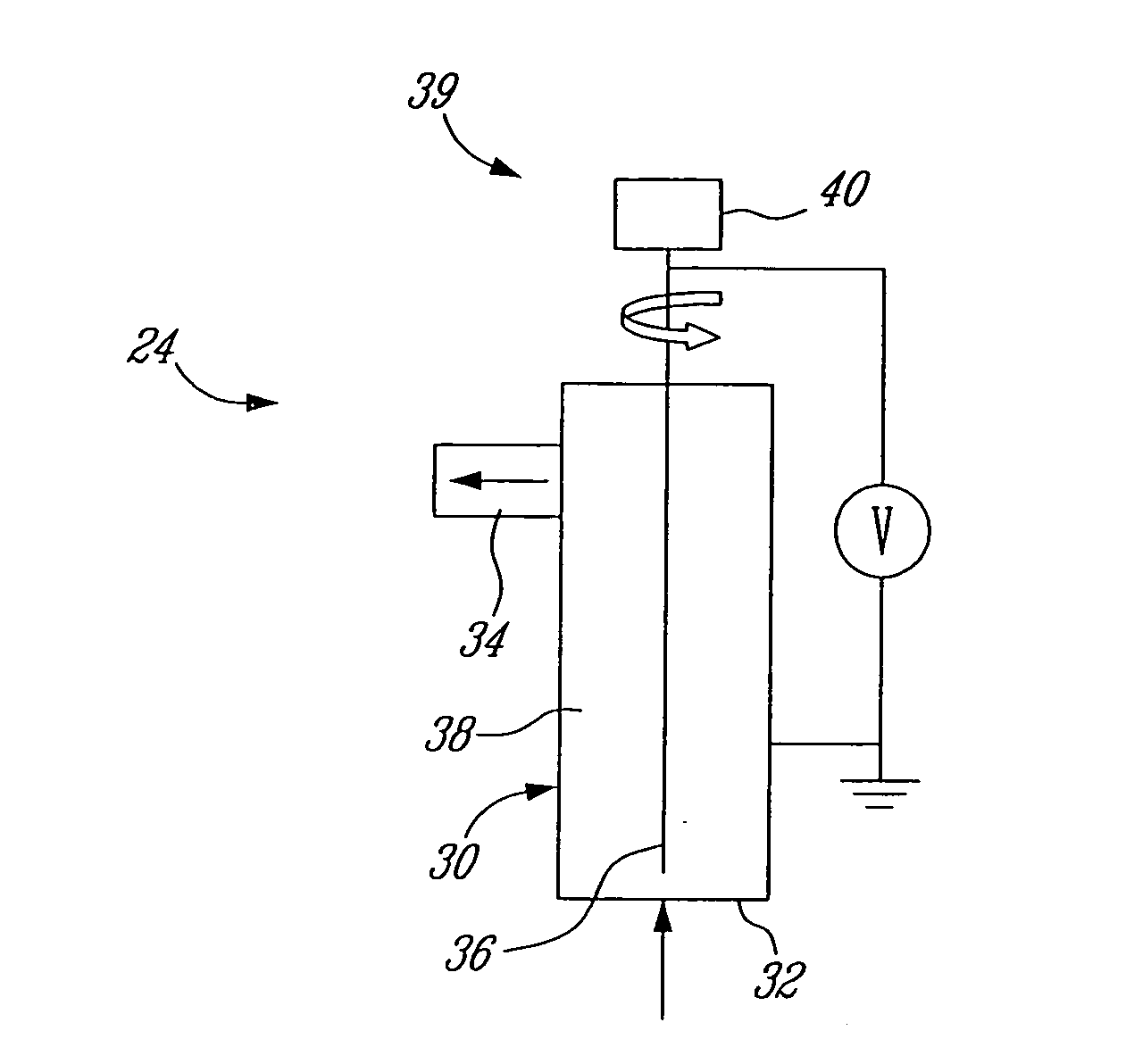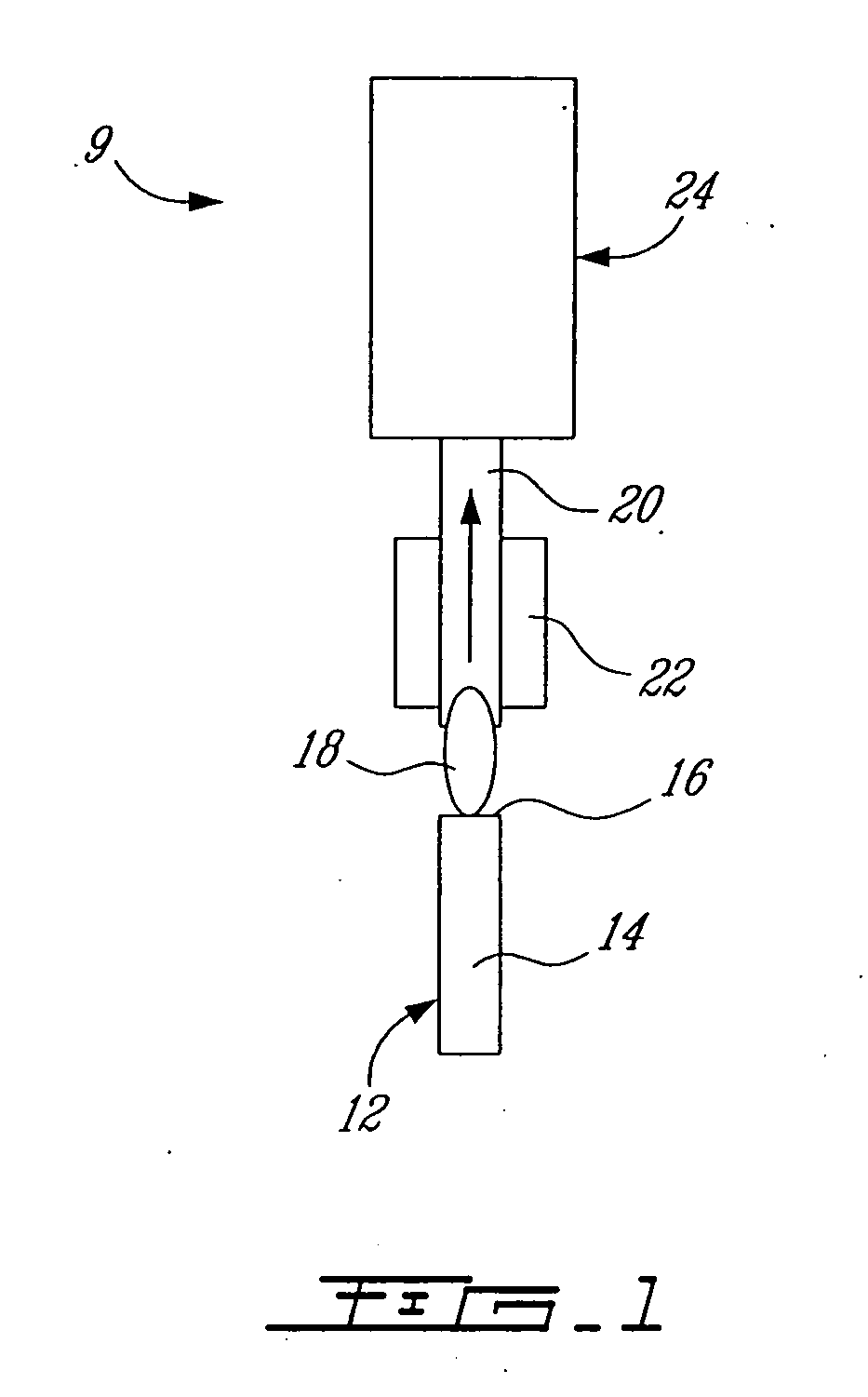Macroscopic assembly of nanometric filamentary structures and method of preparation thereof
a nano-scale, filamentary technology, applied in the field of nano-scale filamentary structures, can solve the problems of difficult deposit or recovery, inability to optimize, and relatively difficult to recover, so as to achieve the effect of efficient separation of different samples, avoiding the maintenance of quality, size, and other properties as constants
- Summary
- Abstract
- Description
- Claims
- Application Information
AI Technical Summary
Benefits of technology
Problems solved by technology
Method used
Image
Examples
example 1
Deposition of Nanometric Filamentary Structures
[0194] An experiment was carried out by using an apparatus for depositing nanometric filamentary structures according to a preferred embodiment of the invention. For this experiment an apparatus similar to the apparatus schematically represented in FIG. 4 was used. The apparatus for depositing filamentary structures was used downstream of a plasma torch for producing single-wall carbon nanotubes for depositing such structures. The plasma torch used was similar to the plasma torch represented in FIG. 1 of US 2003 / 0211030, which is hereby incorporated herein by reference in its entirety. All the parameters related to the plasma torch are controlled by a computer using the LABVIEW® software. The parameters can also be manually controlled. The inert gas used for generating the primary plasma was argon, the metal catalyst was ferrocene, the carbon-containing gas was ethylene and the cooling gas was helium. Helium was also injected toward th...
example 2
Deposition of Nanometric Filamentary Structures
[0196] This example was carried out using an apparatus for depositing nanometric filamentary structures similar to the apparatus shown in FIG. 12. More particularly, the apparatus for depositing the nanometric filamentary structures was disposed downstream of a plasma torch for producing single-wall carbon nanotubes (as shown in FIG. 1). The plasma torch used was similar to the plasma torch described in FIG. 2 of US 2003 / 0211030. The plasma torch was operated in a similar manner as described for Example 1.
[0197] As the production of single-wall carbon nanotubes begins in the plasma torch process, the gaseous phase containing the particles synthesized or the nanometric filamentary structures are supplied to the inlet of the deposition apparatus. This gaseous phase is similar to a smoke and is accumulating in the deposition chamber, where a voltage is applied on the central electrode in order to generate a electric field. In the present...
example 3
Monitoring the Production of Nanometric Filamentary Structures
[0201] This example was carried out using an apparatus similar to the apparatus shown in FIG. 13. More particularly, the apparatus for monitoring the production of nanometric filamentary structures was mounted on an apparatus for depositing nanometric filamentary structures similar to the apparatus shown in FIG. 12. The apparatus for depositing nanometric filamentary structures was disposed downstream of a plasma torch for producing single-wall carbon nanotubes as shown in FIG. 1 and as described in Example 2. In the present example, the particular behavior of the suspended carbon nanotubes in a gaseous phase, when submitted to an electric field, was used in order to detect and monitor the production of nanotubes.
[0202] The optimal conditions for the synthesis of single-wall carbon nanotubes are varying when modifications are done in the plasma used in the synthesis process. For example, if the cooling parameters of the...
PUM
| Property | Measurement | Unit |
|---|---|---|
| Length | aaaaa | aaaaa |
| Length | aaaaa | aaaaa |
| Length | aaaaa | aaaaa |
Abstract
Description
Claims
Application Information
 Login to View More
Login to View More - R&D
- Intellectual Property
- Life Sciences
- Materials
- Tech Scout
- Unparalleled Data Quality
- Higher Quality Content
- 60% Fewer Hallucinations
Browse by: Latest US Patents, China's latest patents, Technical Efficacy Thesaurus, Application Domain, Technology Topic, Popular Technical Reports.
© 2025 PatSnap. All rights reserved.Legal|Privacy policy|Modern Slavery Act Transparency Statement|Sitemap|About US| Contact US: help@patsnap.com



